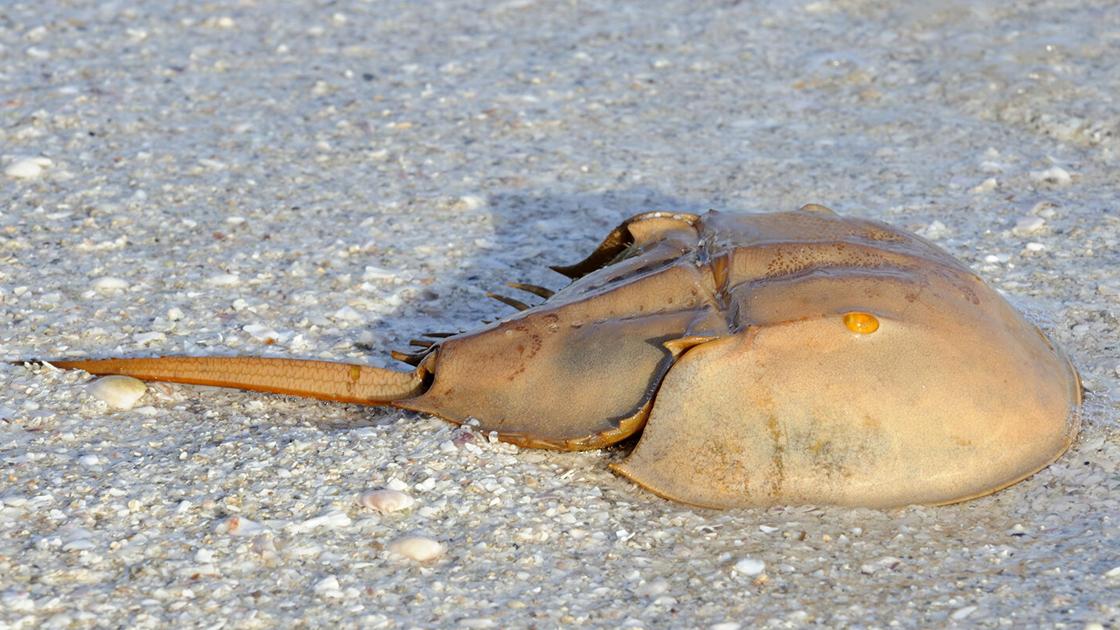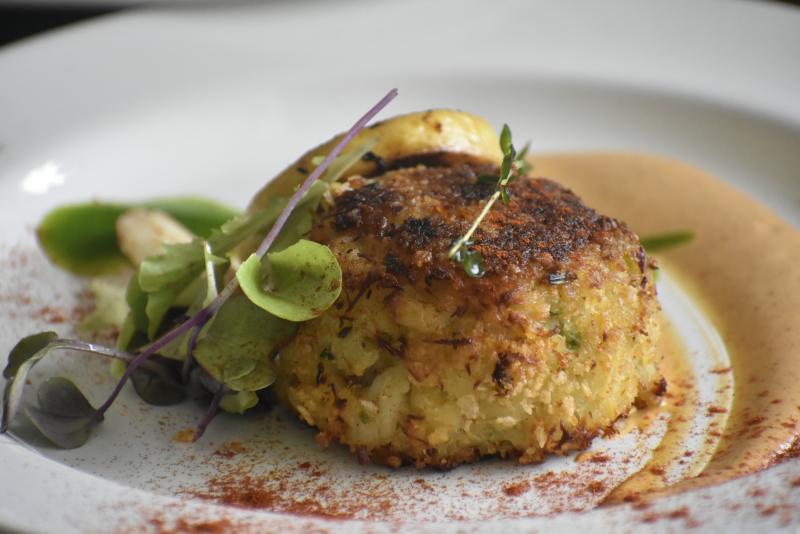
How much do you know about horseshoe crabs? You’ve probably seen them, or maybe their cast-off sheds, while you were out on the water — but really, how much do you know? Let’s take the quiz and find out!
1. How long have horseshoe crabs been in our oceans?
A. About 10 million years
B. About 150 million years
C. About 450 million years
D. About a billion years
2. What color is the blood of a horseshoe crab?
A. Red
B. Green
C. Blue
D. Clear
3. Which of these is most closely related to the horseshoe crab?
A. Blue crab
B. Lobster
C. Tarantula
D. Sand flea
4. What does a horseshoe crab eat?
A. Small fish
B. Seagrasses and algae
C. Worms and molluscs
D. No one knows
5. Where do horseshoe crabs lay their eggs?
A. In underwater caves
B. In nests built on rocks
C. In sand near the shoreline
D. In tidepools
6. Why is the blood of horseshoe crabs valuable?
A. It tastes like Skittles
B. It’s an aphrodisiac in China
C. It’s used for medical procedures
D. It can make you immortal
7. Which of these is a major predator of horseshoe crabs?
A. Redfish
B. Other crabs
C. Sea turtles
D. Coelacanths
8. Horseshoe crabs have a long tail spine called a telson. What is it used for?
A. It’s a venomous stinger
B. Jousting other horseshoe crabs
C. Flipping itself right side up if it gets turned over by a wave
D. It’s just for show
9. How many times will a horseshoe crab molt before reaching maturity?
A. Once
B. About 5 times
C. About 20 times
D. About 100 times
10. How do horseshoe crabs swim?
A. They don’t — they just crawl on the bottom
B. With their fins
C. Rapidly twirling the telson
D. Using their gills as paddles
All done? How many do you think you got right? Let’s find out.
1. How long have horseshoe crabs been in our oceans? C. About 450 million years, long before dinosaurs appeared 230 million years ago. Even more amazing, they have changed very little in that time. Fossil horseshoe crabs are immediately recognizable.
2. What color is the blood of a horseshoe crab? C. Blue. Our blood is red because of an iron-based substance called hemoglobin, which binds oxygen and delivers it to our tissues. Horseshoe crabs use hemocyanin, a copper compound, to carry oxygen through their blood.
3. Which of these is most closely related to the horseshoe crab? C. Tarantula. Despite the name, horseshoe crabs aren’t crabs at all. They’re not even crustaceans. They’re chelicerates, a group that includes the extinct sea scorpions and modern arachnids such as spiders and ticks.
4. What does a horseshoe crab eat? C. Worms and molluscs, which it pulls from the seabed using its claws. Horseshoe crabs have no jaws, so they crush food with their legs before placing it into their mouths.
5. Where do horseshoe crabs lay their eggs? C. In sand near the shoreline, usually in water only a inch or two deep. This is when horseshoe crabs are most often seen, in mating aggregations that can number in the thousands. These happen mostly in spring and fall.
6. Why is the blood of horseshoe crabs valuable? C. It’s used for medical procedures. Specifically, immune cells from their blood are used to test vaccines and other drugs. The blood is valued at $60,000 a gallon. To protect the resource, crabs are caught, partially bled, and released to recover and be re-caught later.
7. Which of these is a major predator of horseshoe crabs? C. Sea turtles. Nurse sharks and predatory snails also eat them.
8. Horseshoe crabs have a long tail spine called a telson. What is it used for? C. Flipping itself right side up if it gets turned over by a wave. This is a big problem during spawning season, when they spend more time in shallow water.
9. How many times will a horseshoe crab molt before reaching maturity? C. About 20 times. Each time, it will cast off a shell that can be mistaken for a dead horseshoe crab. Look for a split along the edge of the broad rounded carapace, which indicates it’s a shed shell that the horseshoe crab has crawled out of.
10. How do horseshoe crabs swim? D. Using their gills as paddles. While they spend most of their time on the seafloor, they can swim by undulating their bodies upside-down and using their book-like gills to push them through the water.
• • • • • • • • •
Now that you know a little more about horseshoe crabs (because I know you didn’t get all of those right), I can get to the reason for this column: A citizen science initiative that could use your help. Here’s the press release:
The Florida Horseshoe Crab Watch citizen science program is strong and growing rapidly statewide. CHNEP has been happy to host training workshops for this program in the past, and help in other various aspects.
Unfortunately, many training workshops this spring were postponed or cancelled due to precautions related to COVID-19. But, there is now a virtual option available! The training is free and open now for registration. All you need is a stable internet connection and an email address.
For more info or to sign up, go to https://bit.ly/3ghXgd6.
Contact Capt. Josh Olive at 941-276-9657 or Publisher@WaterLineWeekly.com.
The Link LonkJuly 30, 2020 at 05:00AM
https://ift.tt/3377idr
Horseshoe crabs: How bizarre | Waterline | yoursun.com - yoursun.com
https://ift.tt/2MkGRbk
Crab

No comments:
Post a Comment